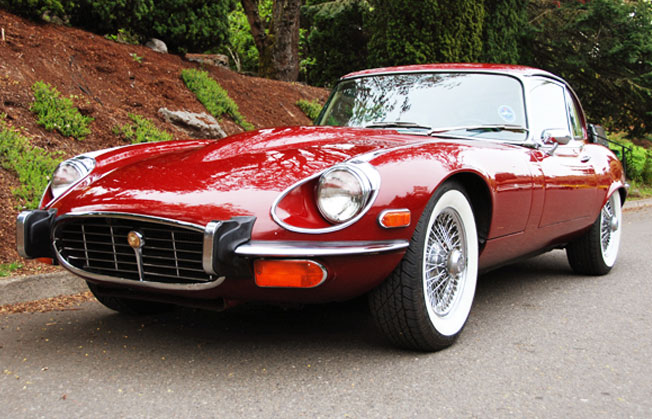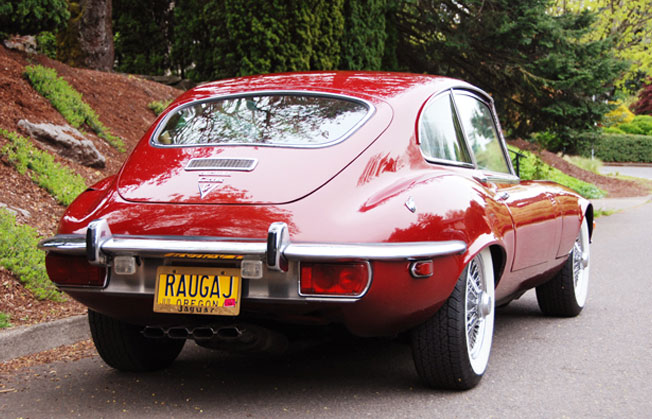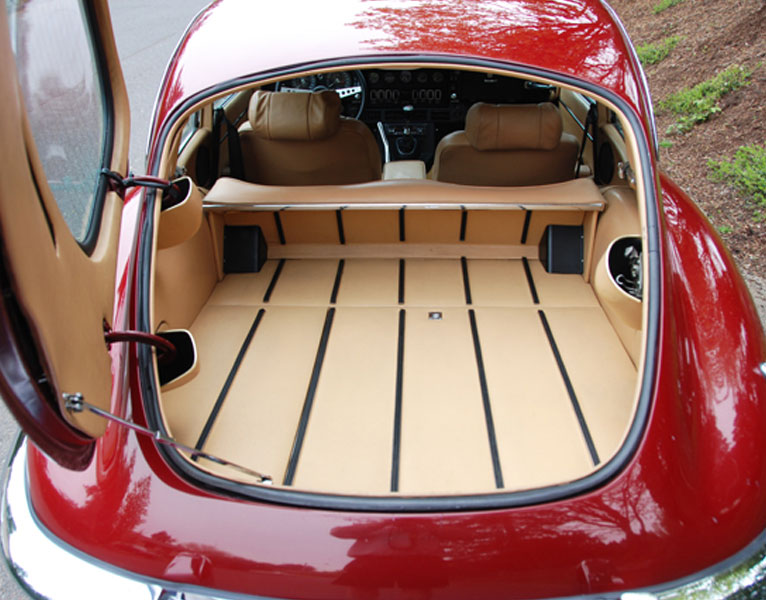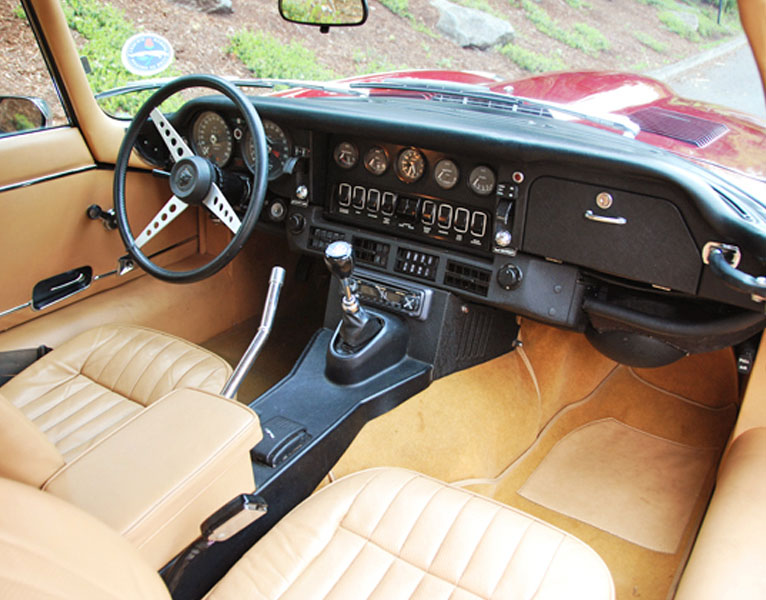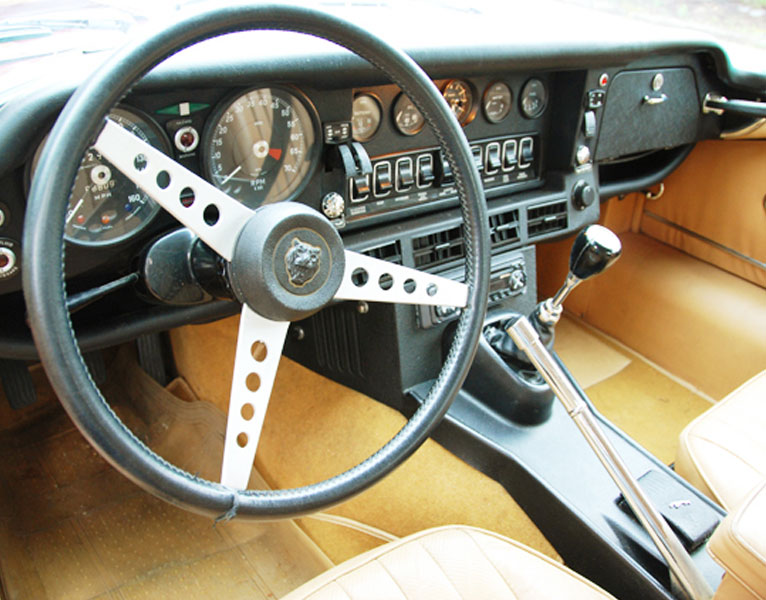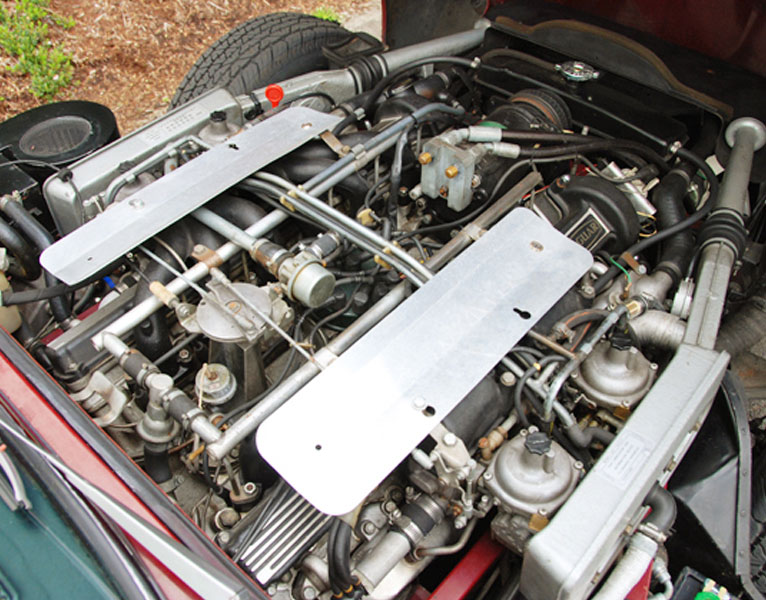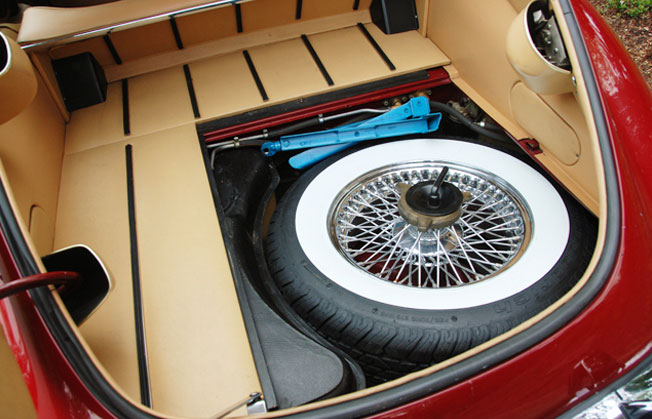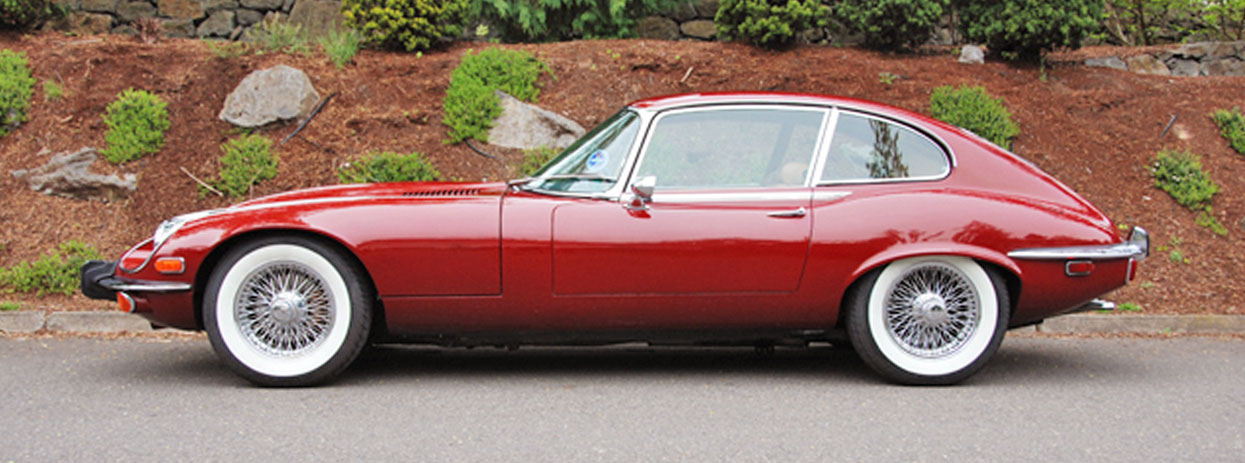Story and Photos: Mike Spicer
Like most car enthusiasts, I pinned a poster of a Series I Jaguar on my wall growing up. As a young adult I was lucky enough to buy a red 1969 convertible E-Type and discovered for myself that when the car hits cruising speed you can feel it settle into the road like no other. These cars are rolling art that are as much fun to look at as they are to drive. While I never considered myself to be a purist, I always enjoyed the Series I and II cars design best and never gave the series III cars much attention.
Fast forward to a point in my life when I had two small children (6 & 9 years old) and a good friend asked me to store her 1973 Jaguar E-Type Series III V12 FHC in my garage. I loved the colors of her car and did not hesitate to help out. I find it funny how the design of the series III never changed but my perspective on the car did. I began to understand the beauty of the car as I could get in and out easier due to the larger doors. The longer wheelbase offered significantly more room in all directions and the rear seats were a perfect fit for my two boys.
The V12 engine is a magnificent beast completely different than the straight six I had been use to driving. It all became very clear. I was enjoying an E-Type as a family man exactly as the Jaguar marketing department predicted. I had finally grown into the target market for the Series III and it felt good, real good! Not that I was a swinging single like Austin Powers but unless you’re a gymnast, getting in and out of a series I or II takes a bit of flexibility. Once you are in they are great, but as a daily driver comfort is always welcome.
The 2+2 styling cue can be seen across many different sports touring cars of the 70s. Lamborghini, Ferrari, and Mercedes all made room for the family as their customer base grew up. The Series III with its cross-slatted front grille, flared wheel arches, wider tires, four exhaust tips, and a V12 badge on the rear now look good to me. Even the large US market rubber bumper over-riders don’t bug me as much as they use too. Not to worry, you will still stand out in a crowd as they did not make a lot of them. Only 15,287 Series III Jaguars were produced, 7,990 convertibles and 7,297 coupes. It just goes to show how a person’s perspective can change over time. I now pay attention to all the Series III Jaguars at car shows and on the street and would not hesitate to drive one daily.
Introduced in 1961, the Jaguar E-Type was designed by Malcolm Sayer who applied aircraft principles to his car designs and made sure they worked both aerodynamically and visually. Enzo Ferrari called it “The most beautiful car ever made”; and with its racing pedigree, unrivaled beauty, and high performance the Jaguar E-type was an instant success and has solidified itself as an icon in automotive industry.

